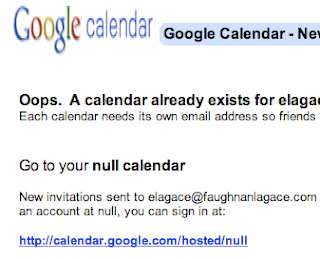Did you know you could share your Address Book through MobileMe, and even allow someone else to edit the entries?
I didn’t think so.
One of the oddest aspects of Apple’s “MobileMe” program is that much of the functionality is distributed between OS X machines, a user-invisible MobileMe repository, iPhones, and a sparse Web GUI. I expect most MobileMe functionality to be exposed through the web GUI, but it doesn’t work that way.
Address book sharing is a prime example (warning, Apple’s troubleshooting page on this feature is pretty much a warning not to use it! Obviously, you need to backup the desktop Address Book frequently.
I followed the directions and from my OS X desktop 10.5.8 user account I shared my Address Book with Emily (editing enabled).
Then, from her account I subscribed to my shared Addresses. I then did an iPhone sync to get everything cleared up and saved an archive of her Address Book [1]. Then, and only then, did I turn on MobileMe sync for her desktop contacts (Address Book).
I had to exit her Address Book and restart it to get my addresses to come over to her account. That’s typical of 10.5 Address Book.
It took quite a while, but now Emily has all of my Contacts on her OS X Address Book. They don’t, however, sync to her iPhone via iTunes. They also can’t be seen from the MobileMe web GUI, so I’m sure MobileMe iPhone contacts Sync wouldn’t see them either.
On the Mac though Emily can copy contacts from my list into her address book though, so copies can go to the iPhone.
It’s an interesting feature. We’ll see how useful it is, but to be safe I’ll disable remote editing.
[1] If you ever do a restore you need to immediately restart Address Book to complete it.

